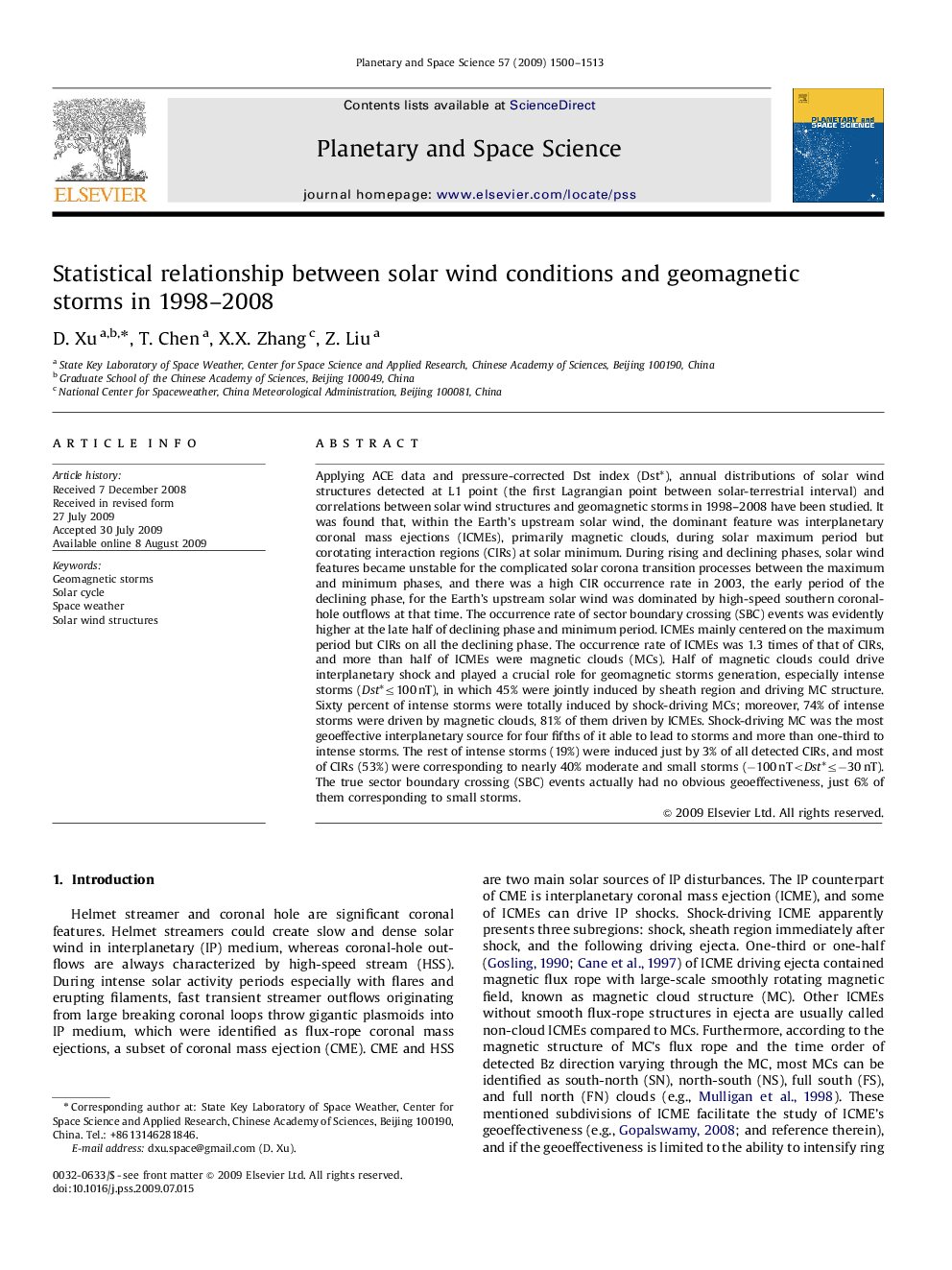| کد مقاله | کد نشریه | سال انتشار | مقاله انگلیسی | نسخه تمام متن |
|---|---|---|---|---|
| 1782056 | 1022316 | 2009 | 14 صفحه PDF | دانلود رایگان |

Applying ACE data and pressure-corrected Dst index (Dst*), annual distributions of solar wind structures detected at L1 point (the first Lagrangian point between solar-terrestrial interval) and correlations between solar wind structures and geomagnetic storms in 1998–2008 have been studied. It was found that, within the Earth's upstream solar wind, the dominant feature was interplanetary coronal mass ejections (ICMEs), primarily magnetic clouds, during solar maximum period but corotating interaction regions (CIRs) at solar minimum. During rising and declining phases, solar wind features became unstable for the complicated solar corona transition processes between the maximum and minimum phases, and there was a high CIR occurrence rate in 2003, the early period of the declining phase, for the Earth's upstream solar wind was dominated by high-speed southern coronal-hole outflows at that time. The occurrence rate of sector boundary crossing (SBC) events was evidently higher at the late half of declining phase and minimum period. ICMEs mainly centered on the maximum period but CIRs on all the declining phase. The occurrence rate of ICMEs was 1.3 times of that of CIRs, and more than half of ICMEs were magnetic clouds (MCs). Half of magnetic clouds could drive interplanetary shock and played a crucial role for geomagnetic storms generation, especially intense storms (Dst*≤100 nT), in which 45% were jointly induced by sheath region and driving MC structure. Sixty percent of intense storms were totally induced by shock-driving MCs; moreover, 74% of intense storms were driven by magnetic clouds, 81% of them driven by ICMEs. Shock-driving MC was the most geoeffective interplanetary source for four fifths of it able to lead to storms and more than one-third to intense storms. The rest of intense storms (19%) were induced just by 3% of all detected CIRs, and most of CIRs (53%) were corresponding to nearly 40% moderate and small storms (−100 nT
Journal: Planetary and Space Science - Volume 57, Issue 12, October 2009, Pages 1500–1513